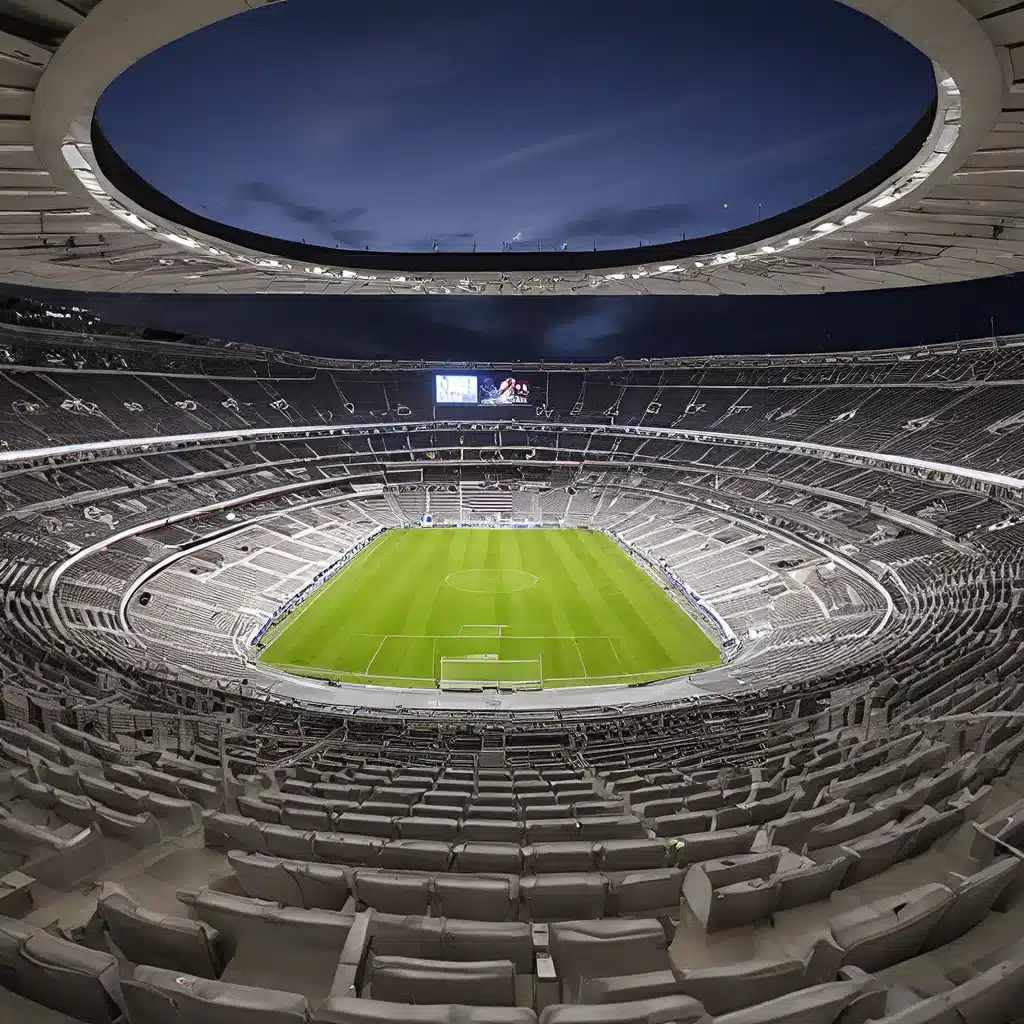
The Estadio Santiago Bernabeu, home to the illustrious Real Madrid football club, stands as a monument to the rich history and unparalleled success of one of the world’s most iconic sports franchises. Located in the heart of Spain’s capital city, Madrid, this grand stadium has borne witness to some of the greatest moments in the annals of the sport, solidifying its status as a true mecca for football enthusiasts across the globe.
The Birth of a Footballing Colossus
The origins of the Estadio Santiago Bernabeu can be traced back to the early 1900s, when Real Madrid emerged as a dominant force in Spanish football. As the club’s popularity and success grew, the need for a larger, more modern stadium became increasingly apparent. In 1923, the club’s leadership, led by President Santiago Bernabeu, set out to make this vision a reality.
The process of constructing the new stadium was not without its challenges. Securing the necessary land and financing proved to be a complex endeavor, but the unwavering determination of the club’s leadership ultimately prevailed. The design for the stadium was entrusted to architects Manuel Muñoz and Luis Alemany Soler, who envisioned a structure that would not only serve as a state-of-the-art football venue but also a symbol of Real Madrid’s enduring legacy.
The stadium’s construction began in 1944 and was completed in 1947, marking a significant milestone in the club’s history. The final product was a magnificent, multi-tiered structure that could accommodate over 75,000 spectators, making it one of the largest stadiums in Europe at the time.
Architectural Marvels and Innovations
The Estadio Santiago Bernabeu is a testament to the architectural ingenuity and vision of its designers. The stadium’s vertical design, with its steeply inclined stands, ensures that every fan in attendance enjoys an unobstructed view of the action on the pitch, creating an immersive and captivating experience.
One of the stadium’s most distinctive features is its unusual vertical design, which makes it one of the steepest stadiums in the world. This innovative approach not only maximizes the seating capacity but also enhances the atmosphere by bringing the fans closer to the action. The stadium’s architects, L35 Ribas & Riba and GMP Architekten, have been praised for their ability to create a structure that is both functionally efficient and visually striking.
In addition to its impressive vertical design, the Estadio Santiago Bernabeu has undergone numerous renovations and upgrades over the years, ensuring that it remains at the forefront of stadium technology and fan experience. The installation of a retractable roof, completed in 2022, is a prime example of the club’s commitment to providing a comfortable and weather-proof environment for spectators.
A Hallowed Ground for Football Legends
The Estadio Santiago Bernabeu has been the stage for some of the most iconic moments in the history of the sport. It has hosted numerous UEFA Champions League finals, including the 1957, 1969, 1980, and 2010 editions, cementing its status as a true cathedral of football.
The stadium has been the home of countless Real Madrid legends, from the legendary Alfredo Di Stéfano to the more recent superstars like Cristiano Ronaldo and Karim Benzema. The roar of the crowd, the thrill of victory, and the agony of defeat have all played out within the hallowed walls of this historic venue, creating indelible memories for football fans around the world.
Visitors to the Estadio Santiago Bernabeu can immerse themselves in the club’s rich history by taking a tour of the stadium. The experience includes access to the team’s dressing rooms, the presidential box, and the club’s trophy room, offering a unique behind-the-scenes glimpse into the day-to-day operations of one of the world’s most successful sports franchises.
A Beacon for Madrid’s Cultural Landscape
The Estadio Santiago Bernabeu is not just a football stadium; it is a integral part of Madrid’s cultural fabric. The stadium’s proximity to other iconic landmarks, such as the Prado Museum and the Royal Palace, makes it a must-visit destination for any visitor to the Spanish capital.
Beyond its status as a footballing mecca, the Estadio Santiago Bernabeu has also played a significant role in the city’s social and cultural life. The stadium’s surrounding area is home to a vibrant array of shops, restaurants, and entertainment venues, creating a bustling atmosphere that extends far beyond the confines of the stadium itself.
The Estadio Santiago Bernabeu’s cultural significance is further underscored by its inclusion in the city’s rich architectural heritage. The stadium’s distinct design, with its towering grandstands and striking visual elements, has earned it a place among the city’s most recognizable landmarks, solidifying its status as a source of civic pride for the people of Madrid.
A Timeless Legacy and a Bright Future
The Estadio Santiago Bernabeu has weathered the test of time, standing as a testament to the enduring passion and dedication of Real Madrid and its devoted fanbase. From its humble beginnings to its current state-of-the-art incarnation, the stadium has evolved and adapted to meet the changing demands of the modern game, always striving to provide an unparalleled experience for its legions of supporters.
As Real Madrid continues to write new chapters in its storied history, the Estadio Santiago Bernabeu remains poised to play a central role in the club’s ongoing success. With its world-class facilities, innovative design, and deep-rooted connection to the city of Madrid, this iconic stadium is sure to captivate and inspire football enthusiasts for generations to come.
Whether you are a seasoned Real Madrid fan or a newcomer to the sport, a visit to the Estadio Santiago Bernabeu is a must-do experience that will leave an indelible mark on your memories. This hallowed ground of football has transcended the boundaries of the sport, becoming a beloved symbol of Madrid’s cultural identity and a true monument to the enduring power of the beautiful game.

